#hockey primer
Text
so, you keep hearing about two idiot 4th liners on the Minnesota Wild that have the same name, but know nothing about them?
well, let me help you


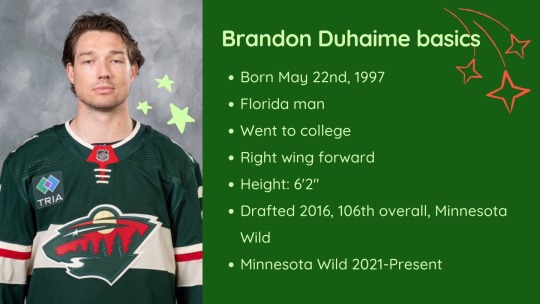

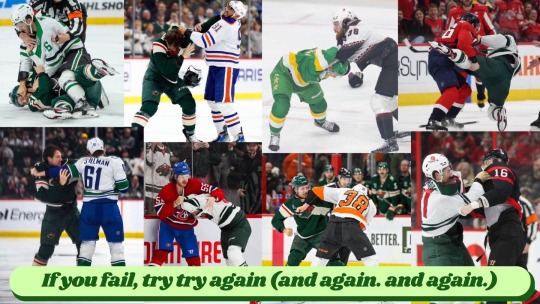
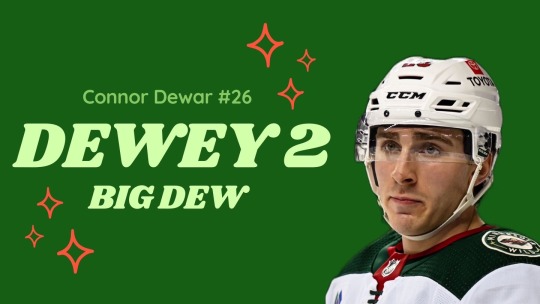
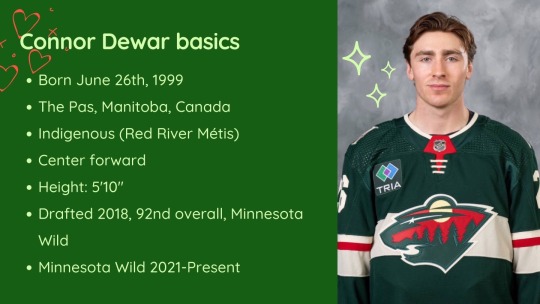
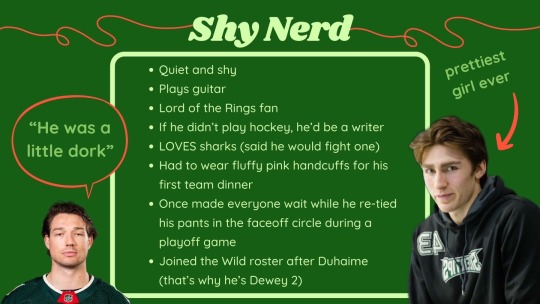
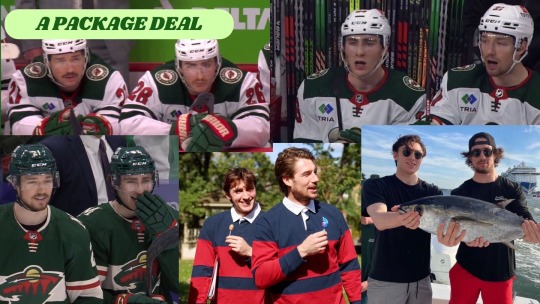
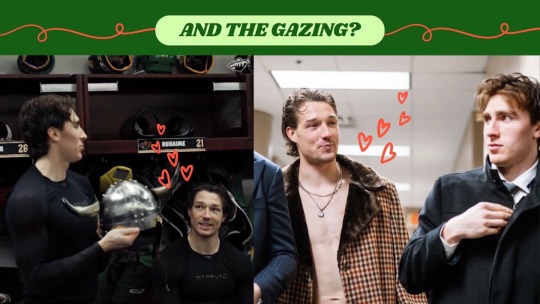
Still want to know more? Further reading below! (AKA iconic dewey posts)
Videos
juggling masters
waiter!
Brandon eats paper
Rookie prank
gus bus
GIF sets
Brandon rookie lap + goal
Connor is a nerd
pathetic Brandon
intimate celly
shark
Misc
neither can cook
THEYRE HOT AND CANT FIGHT
dumb + confident
goalies
worst picture of the deweys ever
I have never made a primer before I hope you enjoyed !!
#if you dont want your post linked here lmk and Ill take it down!#minnesota wild#connor dewar#brandon duhaime#hockey primer#primer
488 notes
·
View notes
Text
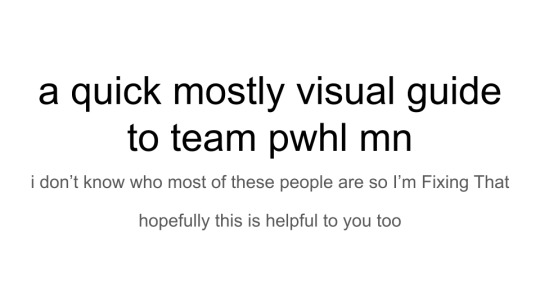










if you, like me, were late to the woho game and don't know who any of these people are. i made this for me so the players i don't know (which is most of them) stop being bodies in purple and start being people with faces to me and my brain. enjoy.
(also i know these lines are gonna change when brodt gets back but these are the lines right now so. yknow.)
188 notes
·
View notes
Text
Waivers: The Basics
Having noticed that many of my mutuals, as well as hockeyblr at large, are unsure of what exactly the NHL's waiver system means and how it works, I've endeavored to write up a little bit of a primer on waivers to make it easier to understand. Meet me under the cut to learn more!
What are waivers?
Put most simply, waivers are a process that occurs when a team says to a player, "We don't want you in the NHL anymore, we're sending you to the AHL". Because of the CBA's (Collective Bargaining Agreement) Article 13, before they can do this, they have to put the player on the waiver wire, which is essentially a 24-hour-long period where any other team that wants that player to play for them in the NHL can claim them. The purpose of the waiver wire is to ensure that teams don't unfairly stash NHL-caliber players in the AHL, thereby paying them lesser salaries (this is the most important part - AHL salaries are generally about a tenth of NHL salaries) and not allowing them to play NHL games. Players that may not be getting a fair shot on one team can move to another, where they can be used more effectively - for instance, Eeli Tolvanen was waived by Nashville, picked up by Seattle, and now plays a key role on Seattle's third line. In fact, he scored Seattle's first-ever goal in the playoffs!
What happens once a player is put on the waiver wire?
If another team claims the player, they are claimed on waivers and are transferred to the other team. Notably, the other team must have the appropriate cap and roster space necessary to claim the player. An example here is Kasperi Kapanen, who was placed on waivers by Pittsburgh and was claimed by St Louis. His cap hit of $3.2m may have been prohibitive for other teams who could have wanted to claim him.
If multiple teams try to claim the player, the player goes to the team that submitted a claim which is the worst in the standings - if it's before November 1st of a new season year, it goes to the team that finished worst in the standings the year before, but if it's after November 1st, it goes to the team that is currently worst in the standings. Take Lassi Thomson, who was placed on waivers by Ottawa and claimed by Anaheim. If, for example, Toronto also submitted a claim, they would not have been awarded Thomson, as Anaheim has the worse standing.
If no other team claims the player, they clear waivers. When they do so, they can be reassigned to the NHL team's affiliate AHL team. Notably, not everyone who clears waivers is immediately reassigned - a player who clears waivers can stay with the NHL team instead (for example, if another player just got injured). They can be sent down to the AHL at a later time - they do not have to go through the waivers process again if they have played less than 10 NHL games (cumulative) or been on the roster for less than 30 days (cumulative) from the last time they cleared waivers. This can be used to a savvy GM's advantage to avoid putting players on the waiver wire.
Why is everyone getting waived right now?
At the beginning of the preseason, every player with an NHL contract, whether it be one-way (NHL only) or two-way (NHL and AHL), is invited to that team's training camp. This places them on the NHL preseason roster for that team. As training camp goes on and players get cut, they then must pass through waivers to go to the AHL. Unless, of course, they're waiver exempt.
What is waiver exemption and why is it important?
So you might already have noticed an issue with the waiver system - it's terrible for younger players. If solely the waiver rules we've discussed above existed, every player being sent to the AHL would have to go through waivers. This would include prospects who are signed to an NHL ELC (entry-level contract) but didn't make the cut for the season. Obviously, this is bad for teams - imagine drafting players who you know will be good for you in 2 or 3 years and then losing them all to the waiver wire. This is why waiver exemption exists.
Waiver exemption, to keep it simple, is a protection that certain players have that means they do not have to go through the waivers process to be reassigned to the AHL. The specific details of waiver exemption are a little complicated - let's take a look at the table to make it make more sense.

This table is either/or and is defined by the age when their NHL ELC was signed. A skater who signed their ELC as an 18-year-old is waiver exempt for either 5 years or 160 games played (including playoff games) at the NHL level. A skater who signed at 21 is exempt for either 3 years or 80 NHL games. Goalies have different requirements than skaters because they generally take longer to develop and don't play as many games.
There is a fairly common misconception that all players on their ELCs are automatically waiver exempt. This is false. The second a player hits the amount of games played for their age, they are immediately no longer waiver exempt. Usually, this doesn't occur until after the ELC is over, as most ELC players deal with injuries and healthy scratches, as well as not generally being given the reins to play on the NHL roster for the entire season. One notable example that disproves the "ELC means waiver exempt" conception is Dawson Mercer from New Jersey. Mercer signed his ELC as a 19-year-old in December of 2020. He has played all 82 games in the past 2 seasons (2021-22 & 2022-23) plus 12 playoff games for a total of 176 NHL games played. Under the games requirements, he is now no longer exempt from waivers, despite having one whole year left on his ELC.
For the 25+ category, upon playing a single NHL game, the player is waiver exempt for that entire season and that entire season only. Andrei Kuzmenko from Vancouver is a good example of that - last season, he signed his one-year ELC with Vancouver as a 27-year-old and could have been sent to the AHL at any time without going through waivers. (He was not, needless to say.)
There is one very important exception to the table: if an 18- or 19-year-old player plays 11 or more games with an NHL team in a single season, their waiver exemption is automatically cropped. For that season, and the next two, the player is waiver exempt, but after that, they are no longer exempt. This extends to the next three if the player in question is a goalie and not a skater. (To make it easier to understand, it's as if they jumped into the 20-year-old category.) However, 18- and 19-year-old prospects generally only play 9 games maximum at the NHL level in order to allow for the entry-level slide, allowing the contract to "slide" forward a year, letting teams keep the player on the ELC for an extra year and thus save money.
Are there any other ways a player can play in the AHL without going through waivers or being waiver exempt?
Yes, actually! There are two main exceptions - they're for conditioning loans.
First, what is a conditioning loan? A conditioning loan is a short-term reassignment to the AHL. There are two types of conditioning loans: the standard conditioning loan and the LTIR conditioning loan.
A standard conditioning loan, specified under the CBA 13.8, occurs when a player agrees to head down to the AHL for a few games to "wipe off the dust" on their game, so to speak. They're often used by players who have ended up as perennial healthy scratches on their NHL teams, so that they're able to jump in if there's an injury or other issue. Standard conditioning loans can last up to 14 days. One example of a standard conditioning loan is Shane Wright, who was sent to the AHL by Seattle very early in the season for conditioning, partially to bypass the requirement that the NHL has with the major junior CHL that would have required him to go back to the CHL were he officially reassigned from Seattle. Another is Nathan Beaulieu, who was sent to the AHL by Anaheim in January for a four-game stint.
An LTIR conditioning loan, specified under the CBA 13.9, occurs when a player coming off of LTIR agrees to head down to the AHL for a few games to "wipe off the dust" on their game, so to speak. These loans can only last 6 days or 3 games, whichever comes later, and the idea is to be able to figure out whether a player is able to return to form or requires more time to heal properly. For example, Travis Dermott was sent to the AHL by Vancouver in December to evaluate whether he was back to form after a concussion sustained in the preseason. He played one game in the AHL, then drew back into Vancouver's lineup for eleven games before going back on IR for the rest of the season due to the concussion repercussions. Notably, a team can only use one LTIR conditioning loan for each time a player is on LTIR.
What is emergency recall and why does it make a player waiver exempt?
Emergency recall occurs when a player on a team's NHL lineup is injured and the team can no longer ice a full squad because of it. (As a reminder, each team must carry 12 forwards, 6 defensemen, and 2 goalies. Usually, teams keep an extra forward and defenseman around as a healthy scratch in case of injuries, but some teams are pressed against the cap and cannot carry extra players.) In this case, they can call an AHL player (or multiple, at times) up on an "emergency" basis to fill in during the time that the NHL player is out. Once the NHL player is healthy again, the AHL player can either be transferred to a regular recall or gets sent down to their AHL team again. One example here is Akira Schmid, who was bouncing back and forth between Utica and New Jersey on emergency recalls every few weeks because Mackenzie Blackwood, one of New Jersey's two goaltenders, was constantly getting hurt.
It makes sense, then, why emergency recall would grant a player temporary waiver exemption status - it would be awful to have to recall a player from the AHL, have them in the NHL for a little bit, and then have to send them through waivers and get claimed when your roster player is healthy. However, if an emergency recall player plays in at least 10 NHL games, he loses his waiver exempt status under emergency recall (other forms of waiver exemption still apply).
What are unconditional waivers?
Unconditional waivers are different from regular waivers in what they do. Passing through unconditional waivers does not send you to the AHL. Instead, they are used by teams that want to buy out or terminate players' contracts, completely giving up their rights to the players. Players placed on unconditional waivers are almost never claimed because of this - only two players have ever been claimed off unconditional waivers.
Okay, hold on - what's the difference between a buyout and a termination?
A termination occurs when a player's contract is terminated. The player severs all ties to a team and does not continue to be paid by the team. The team does not incur any cap penalties from termination. There are two main types of termination.
The first type of termination is mutually-agreed-upon termination. In the case of Filip Zadina, who was recently terminated by Detroit, he made it clear that he would refuse to report to the AHL after being sent down on regular waivers. The team and Zadina then proceeded to terminate the contract so that Zadina would be free to negotiate a contract with another NHL team instead of playing for Detroit's AHL team, and so that Detroit would not incur any cap penalties from buying out Zadina. Another example is Lukas Sedlak, whose contract was terminated by Philadelphia when he made it clear to the team that he wanted to return to Europe to play. Philadelphia put Sedlak on unconditional waivers, terminated the contract, and Sedlak soon returned to his native Czechia to play for Pardubice.
The other, rarer type of termination is for material breach. Material breach termination is exemplified by Alex Galchenyuk, whose contract was terminated by Arizona after they became aware of the intoxicated driving incident involving Galchenyuk. Essentially, material breach is used when players are acting illegally, either against the law of the United States/Canada, or against the terms of their contract. The reason these terminations are so rare is twofold: Not only are hockey players generally going to try to avoid breaking the law, when they do, the player's association is usually going to investigate and file appeals and the like to try to secure their players the highest possible settlement despite the termination (and set a precedent so other teams are not encouraged to terminate contracts for material breach).
On the other hand, a buyout occurs when a player is released by a team, but the player continues to be paid by the team as per their contract. The team incurs cap penalties from buyouts - 1/3 of the contract value if the player is younger than 26 at the time of the buy-out, 2/3 of the value if the player is 26 or order. This penalty is spread across double the years left on the contract.
An aside - this is also where the idea of a "buyout-proof" contract comes in. A buyout-proof contract contains most of the salary being paid in the form of signing bonuses, which are paid in full even if the contract is bought out. (These contracts are also considered "lockout-proof", as, again, the signing bonus must be paid even if there is a lockout and no hockey is being played.) As an example of this, take a look at Auston Matthews's extension:

If the Leafs try to buy this contract out, they'd have to pay Matthews the entirety of the signing bonuses as well as 2/3 of the base salary, making the cap savings incredibly marginal and just not worth it to buy out. Thus, it's buyout-proof.
Is that everything I need to know about waivers?
I think so! If you have any other questions, please drop me a line in my inbox or via DMs - I'll be happy to explain more to you! :D
189 notes
·
View notes
Text
Minnesota Wild 2022-2023 Primer
s/o to @fifthovertime for introducing me to the wild, i can’t thank you enough







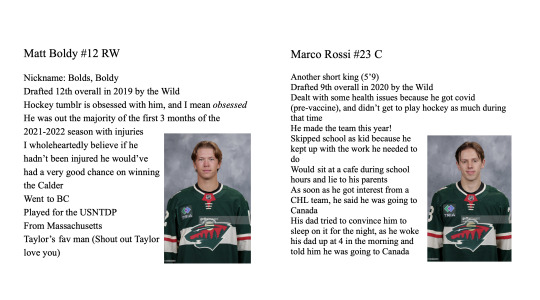




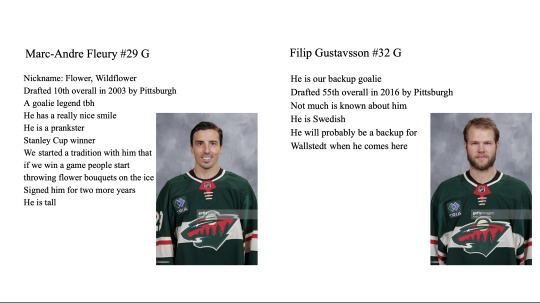

#minnesota wild#mn wild#wild primer#mn wild primer#hockey chats with quinn#please boost!#i love this team#minnesota hockey#hockey primer#matt boldy#marc-andre fleury#brock faber#marco rossi#matt dumba#kirill kaprizov#mats zuccarello#marcus foligno#jesper wallstedt#carson lambos#tyson jost#jared spurgeon#joel eriksson ek#jonas brodin#jon merrill#jordan greenway#connor dewar#brandon duhaime
62 notes
·
View notes
Text
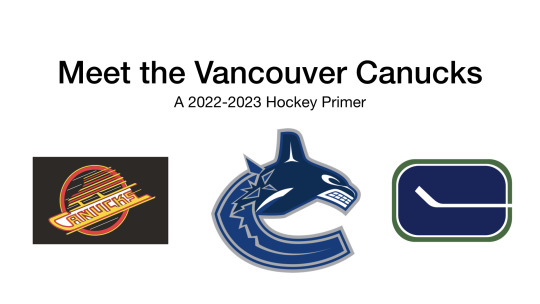
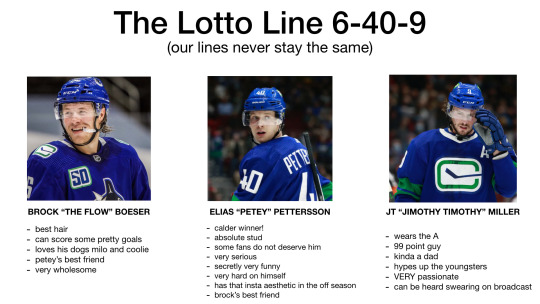








22 notes
·
View notes
Text
a guide & primer to your '23-'24 seattle kraken

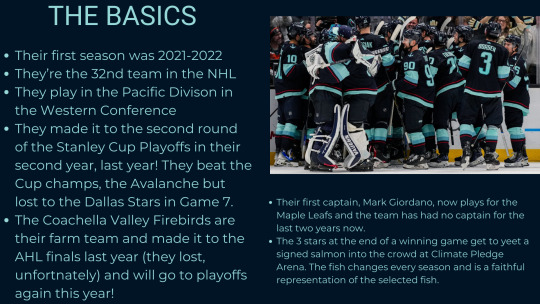



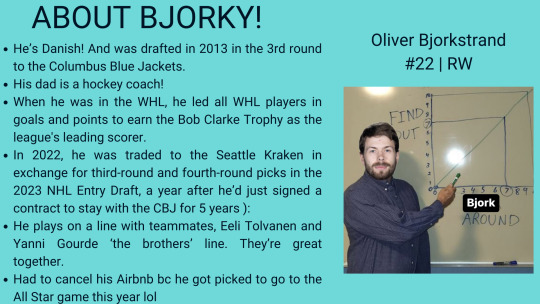


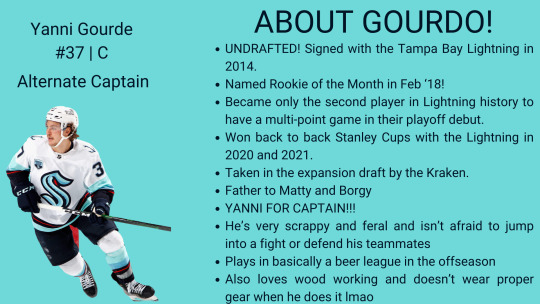


required viewing re: jared mccann


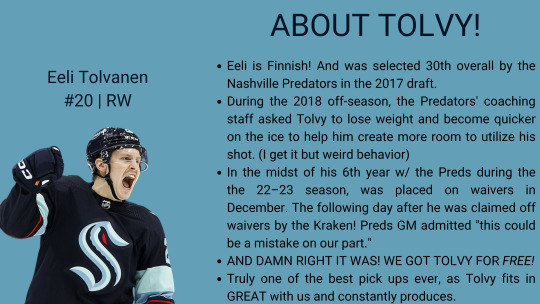

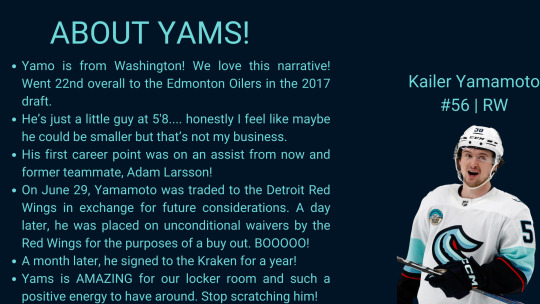

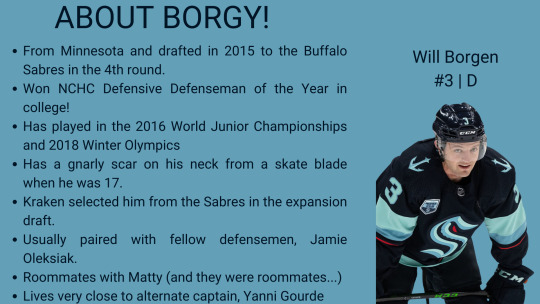
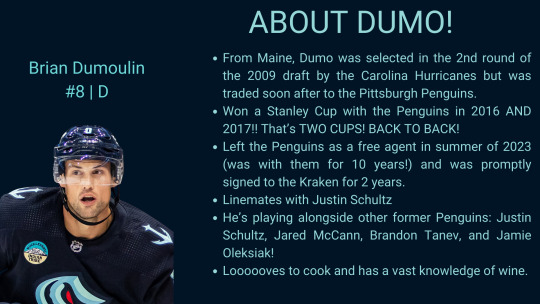

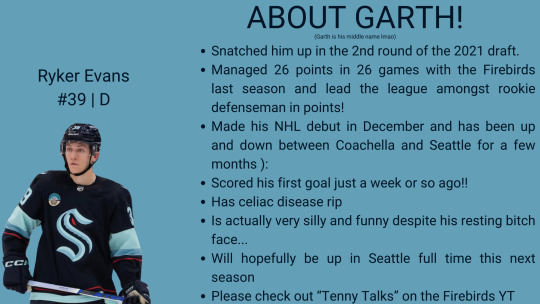


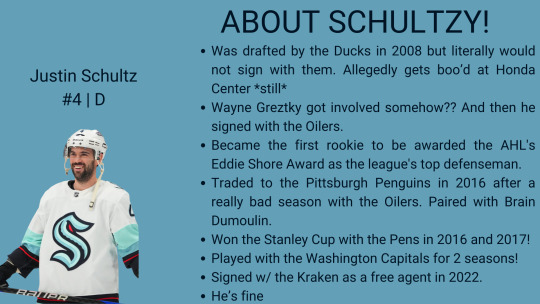
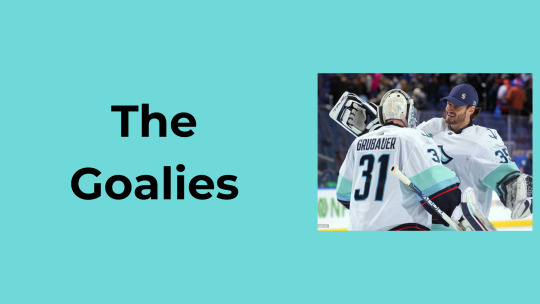
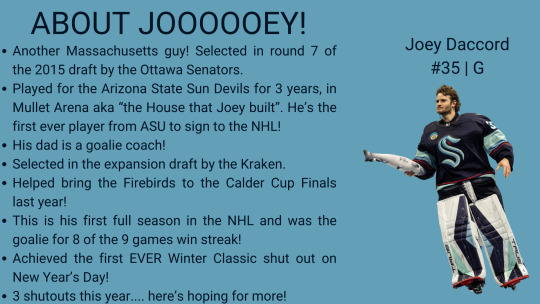




THAT'S KRAKEN HOCKEY, BABY!
#seattle kraken#kraken#seattle kraken hockey#kraken primer#seattle kraken primer#idk how else to tag this
103 notes
·
View notes
Text
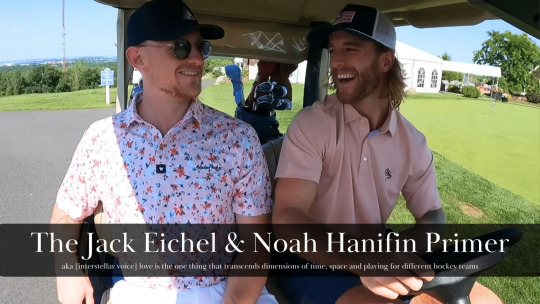
The Jack Eichel & Noah Hanifin Primer
aka [interstellar voice] love is the one thing that transcends dimensions of time, space, and playing for different hockey teams
begging you to click through to the powerpoint because there's so many links and gifs but if you wish, I'm putting pics of the slides under the cut!
I could not have done this without the contributions of @lostandmost thank you for being insane about Jack and Hanny with me <3
tl;dr at the end !

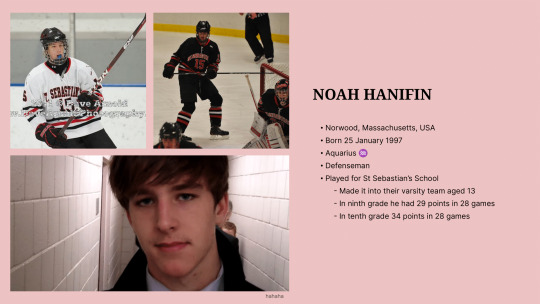


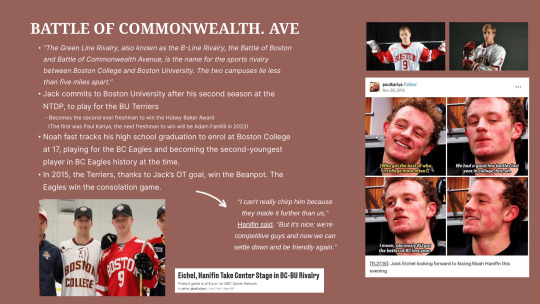
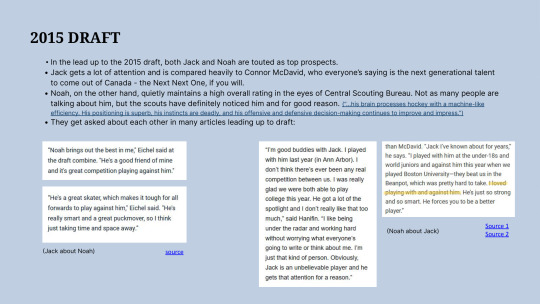
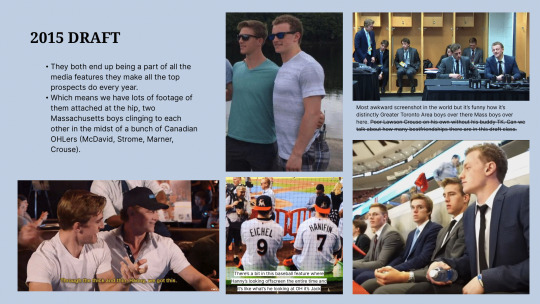



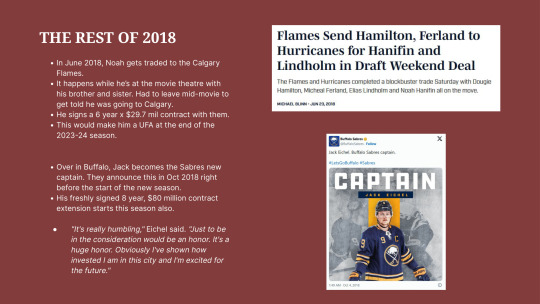
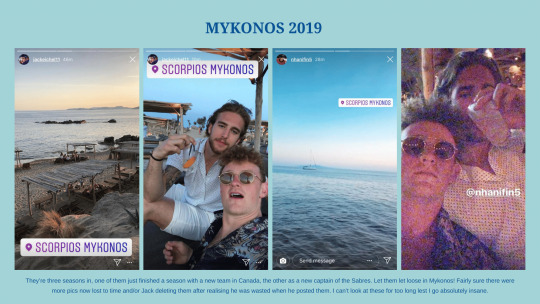

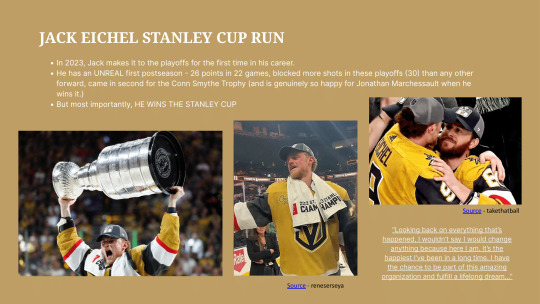





this gif is a must see so I'm adding it here:
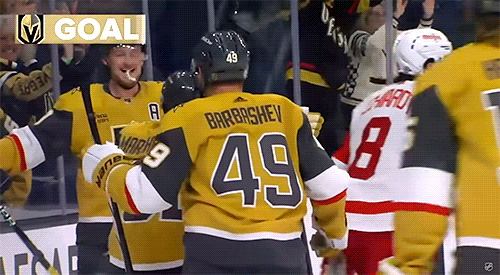

#crawls through your window. hey do you want to know more about jack and hanny?#jack eichel#noah hanifin#primers#hockey primers#vegas golden knights#*#my stuff#if u catch a mistake or have something to add please lemme know i feel like my brain is soup after working on this all weekend <3#posting this and going to bed catch u on the flip side#just realised i cropped out amatts in the third slide sorry auston will fix that later#jackhanny
98 notes
·
View notes
Text
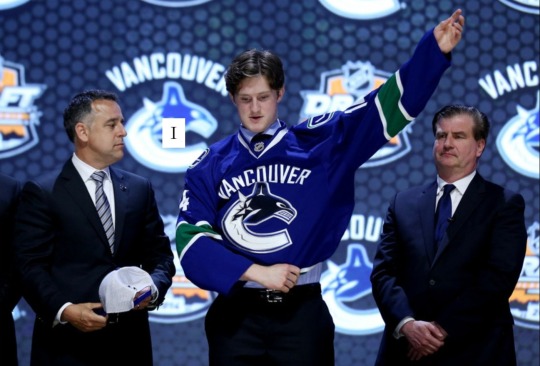



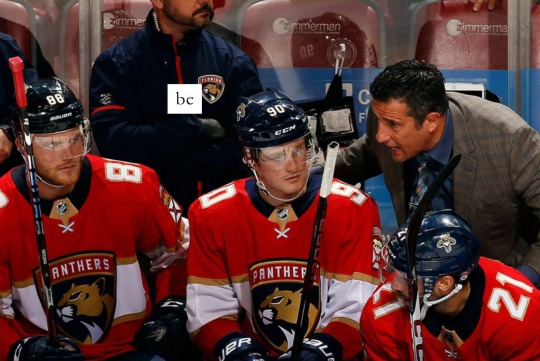

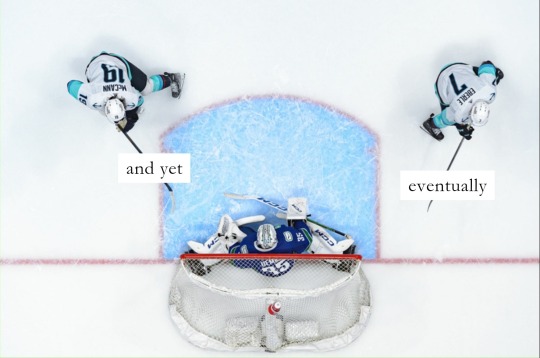


based off of this amazing mccann primer by @yamball (!!)
(x, x, x, x, x, x, x, x, x, x, x)
#jared mccann#seattle kraken#hockey poetry#mine own edit#edit⁷#i feel CRAZY this dude is so ‼️‼️ this primer made me go ‼️‼️‼️‼️ AUGH#tbh i didnt even mean for the second to last picture to be a thing but there were just. so many pictures of him kissing his homies#i cant resist that im only s guy#a note also: he is so good at looking miserable. i really appreciate that in a dude
113 notes
·
View notes
Text
FANTASY HOCKEY FOR TUMBLRINAS: A GUIDE
been curious about fantasy but have no idea how it works? and whatever guides google deigns to give you are not helping? do you live in canada or minnesota and have your coworkers managed to press-gang you into their fantasy hockey league and you don’t want to embarrass yourself? welcome! i have one whole season of fantasy hockey experience and managed to get second place in my league so i’m probably qualified to take you through this. strap in and hopefully this isn’t incoherent because i have extremely limited visual aids available!
PART 1: HOW IT WORKS
first, the two major fantasy sites are going to be yahoo fantasy and espn fantasy. which you use is probably determined by which one your league commissioner (person who made your league) likes better. disclaimer: basically all of my experience is with yahoo fantasy.
so before we get to talking about the draft - the first thing you do in your fantasy sports journey - let’s talk about what you’re drafting your favorite little hockey men for.
the goal of fantasy hockey is to win either head-to-head matchups or your group as a whole (depending on the settings of your league, to my knowledge head-to-head is more common) in individual stat categories that fall into two groups - skater stats and goalie stats. for instance, if all your skaters got more goals over the course of a week than your opponent’s skaters, you would win the point in that category. if your opponent’s goalies had a better average save percentage than your goalies, they would get the point in that category.
all stats are cumulative across your entire roster, for the record. even save percentage and goals allowed average for goalies, which are averaged out, use every goaltender appearance.
if your win-loss record is good enough (for some leagues, each category separately counts towards your record - for example if your league has 11 categories and you win 6, lose 4, and draw 1, your record is 6-4-1, not 1-0 - and for other leagues, each stat adds to a cumulative point total in different weights, i.e. goals worth 1, assists worth .5, etc., and whoever's total is higher wins), towards the end of the season you make your league’s playoffs, where you duke it out for the title.
there are two commonly-used sets of skater stats, which have become the ways people define fantasy hockey leagues as a whole: points leagues and “bangers” leagues.
points leagues use, as you can imagine, different points categories for skaters. the most common set of these is goals, assists, and power play points. potentially plus or minus shorthanded points depending on your league. bangers leagues, on the other hand, usually use those three stats plus shots on goal, hits, and blocked shots. this makes player selection more multifaceted and interesting and shifts the balance of who has more value in a given league. brady tkachuk is maybe the exemplar of a player who gains a ton of value in bangers leagues due to him having good points totals while also putting up a lot of value in those banger stats. i had esa lindell in my team last season, who put up a whole 24 points, none of them on the power play, but was still valuable to me because he had a lot of hits and blocked shots and helped me win those categories on a pretty regular basis.
you may be looking furiously on normal websites to figure out a player’s banger stats. you will not find them. ask me how i know this. your most reliable source of player stats is going to be the fantasy websites themselves, and you can look through player databases without having a team. yahoo, at least, even lets you do mock drafts, if you want to get cozy with the ui and the experience before you do it for realsies.

(a sample of what a fantasy stats page might look like. this particular one is displaying player stats from last season. if unfamiliar with stat abbreviations, in order, they are: games played, goals, assists, power play points, shorthanded points, shots on goal, hits, blocked shots.)

(same as above, but for goalies. stats in order: games started, wins, goals allowed, saves, shutouts, overtime losses.)
goalie stats are usually wins, goals allowed average, saves, and shutouts. plus or minus save percentage or overtime losses, depending on your site and settings. these are all pretty straightforward, with the small wrinkle of “do you take a better goalie on a worse team knowing he’ll win less but have better other stats” vs “do you take a more average goalie on a better team knowing he’ll be better supported by his system which might help his stats and definitely get him more wins”.
PART 2: THE DRAFT
now that you know what you’re looking for, let’s talk about the draft.
most fantasy drafts are “snake drafts”, meaning the pick order flips every round, in interest of fairness. while most pro sports drafts are the same order every round (1→16, 1→16, 1→16, etc.), they have history to fall back on. poor teams need better players to build around, while better teams already have those players. but in the average fantasy league, everyone is starting from zero. so the order goes 1→16, 16→1, 1→16, etc. for as many rounds as your draft goes. the person who picked last in the first round gets to pick first in the second round, and so on.
what you’re looking for here is highly dependent on your team settings. does your league just distinguish forwards from defense from goalies? or does forward position matter? (if it does, know a player is not locked into a spot once you use him there - he can play any of his listed positions at any given time, whether or not he actually plays that spot in the lineup. for instance, joe pavelski is listed as both a center and right wing - despite the fact he rarely plays center, you can deploy him there on any given night. or you could deploy him at right wing, if that’s where your opening is.)
i’m going to take you through this with the settings used by my last league.
in my league, you had 16 guys on your roster. 2C, 2LW, 2RW, 4D, 2G, and 4 guys on the bench (who, if they played that day, their stats would not be added to any of your totals, although this was rarely an issue). so on my team, i usually had 8 forwards, with at least 3 people able to play each position, 5 defensemen, and 3 goalies. your league might have a bigger roster, it might not have a bench, it might not care about where forwards play as long as they’re forwards, and this all influences the spread of who you draft and when. if your league calls for - in the case of espn’s default league settings - 9 forwards, 5 defensemen, 1 utility player (put another way, any skater), 2 goalies, and 5 guys on the bench, well, you probably take 12 or 13 forwards, 7 or 8 defensemen, and 3 goalies, and it’s on you how you prioritize the order of that.
really, the important parts of the draft are the first few rounds, when you pick the really high-end guys. later-round players are easier to swap out for each other - which you can do! any guy not drafted is considered a free agent, and if you draft a guy who’s underperforming, you can swap him out for an undrafted guy who’s doing better. so don’t sweat the later rounds too much beyond what roles you need to fill. you can let your fantasy site’s ranking board help you out there.
lightning round q&a:
when do you pick a goalie? generally people go the same way nhl teams do in the entry draft - probably not in the first round unless he’s a really sure thing to an extent that he’s more valuable than whatever top skaters are still there.
can you run with just 2 goalies? if you are extremely confident that your 2 goalies combined can match the output of other teams going with 3 goalies. if you have a vasilevskiy or a sorokin or the type of goalie who is a clear starter and plays at a high level for those starts and your other goalie is giving good starts, then yeah maybe you can run with 2. i did for a bit. take the third goalie though, it’ll make your life so much less stressful, especially if your league has a minimum amount of goalie appearances requirement (mine did - your goalies had to make 3 appearances a week for their stats to count at all).
when do banger stats become more valuable than points? i wish i had a clear answer for that. you just gotta feel it out, man. broadly, when a player’s point total starts to get into average territory, then probably start really looking for those banger stats to maximize value. but if a guy has notable banger stats then maybe you take him before point totals get average. no good answer to this one, sorry
is there any reason for mcdavid not to be 1oa, even in bangers? no, and anyone who tries otherwise is being contrarian for the sake of it. if you luck out getting 1oa just take mcdavid. come on.
if you pick last in the first round, are you boned? well i picked last and got second place, so no you are not :)
when do you make a “reach” pick? as you’re drafting, you’ll have a list of players ranked by the site in front of you. use that to help but not as a bible. you reach when you think someone will take a player before you get to pick again, and the difference between that player and the next player on your list is worth the risk.
idk if people have more questions i can make another post or something. maybe you don’t have any of these questions. i hope it was useful anyways
PART 3: FANTASYING
here’s the meat-and-potatoes nitty-gritty of it all. here’s a very retro view of what your team hub might look like - note the ui absolutely does not look like this anymore:

you can actually see on here what i was talking about earlier with that “guys who play multiple positions can be used in either/any” thing. malkin is listed as both a center and a right wing, and is deployed as a center here, but if, say, this person wanted to bring in derek roy but still use malkin, he could put roy in malkin’s center spot and move malkin to bump selanne or jagr to the bench.
good news! i did manage to find someone’s screenshot with something similar to current app ui:
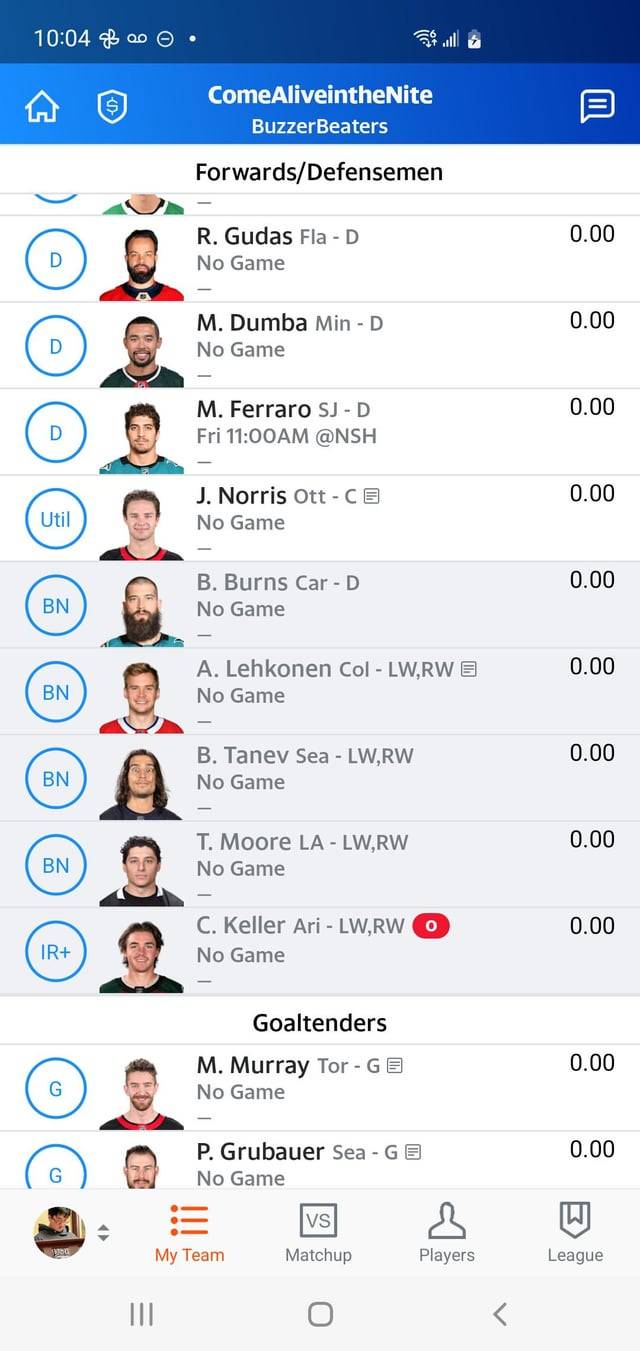
player stats for the week would be under where it says no game, but you can actually see the ir+ spot in use and what the general layout looks like. actually, speaking of ir-
let’s talk about ir real quick. and this bit is all based on yahoo fantasy, so if espn does this different, i’m sorry and you’re on your own
so! if your team has a dedicated ir+ spot, you can put any guy who is officially listed as out (O, as keller is above), injured reserve (IR), or long-term injured reserve (LTIR) there, and he will not count against your roster total. you have a limited amount of these spots, so probably don’t get landeskog, confirmed to be missing the whole season, and stick him on there, although you can and it won’t affect your main team at all. it would only be a problem if with him you have more injured guys than there are ir+ spots. with this, you could even draft a guy starting the season injured, like a brandon montour, stick him on an ir+ spot, and get a fill-in guy out of free agency afterwards (since you’ll only be drafting enough players to field a team without any injuries), if you think that when he’s healthy, he’ll boost your team enough to be worth missing out on a player of the caliber of where you drafted him. so if a player on your team gets injured and you have ir+ spots, use them! pull a guy out of free agency to take the injured player’s spot and go about your merry business knowing you can still field a full team.
anyways - as before, only the players off the bench (in the white spaces on this ui) count towards your totals. so, and i cannot stress this enough, MAKE SURE YOUR PLAYING PLAYERS ARE ACTUALLY PLAYING AND ADDING TO YOUR STAT TOTALS. much heartbreak has been had by people who have forgotten to do this. yahoo has a fun little button that will automatically do this for you, but only for the week, so keep up with that, too. (for purposes of fantasy, weeks start on mondays btw.) it might also not always start the people you want starting if there’s more guys playing that night than there are spots on your starting roster, so watch for that, too. like if you have 4 defense spots and you have 5 defensemen playing that night, decide which one’s stats you’re most okay with missing out on. players only lock in once their game time comes around, so you do usually have the entire day to decide. you might be influenced by where your matchups are standing - if you’re definitely losing your assists matchup, but your hits matchup is close, you might sit your points-producing defenseman in favor of your big hitter. stuff like that.
and that’s actually pretty much it! even playoffs work the same way. once you’ve got your team, the day-to-day of fantasy is pretty simple. make sure your players are playing, adjust your team with free agents if necessary, conveniently ignore trade requests if they suck (as far as i can tell trading is more prolific in irl fantasy groups where people know each other better, we had like no trades in my online league of strangers last season), root on some guys you’ve never heard of before because you need them, and have fun!
19 notes
·
View notes
Text

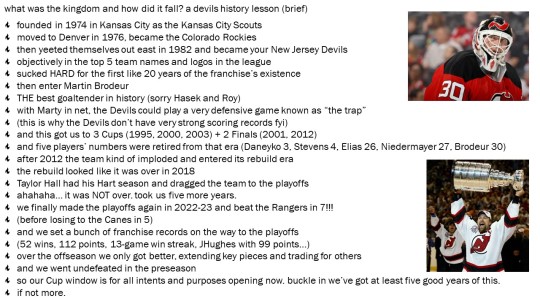













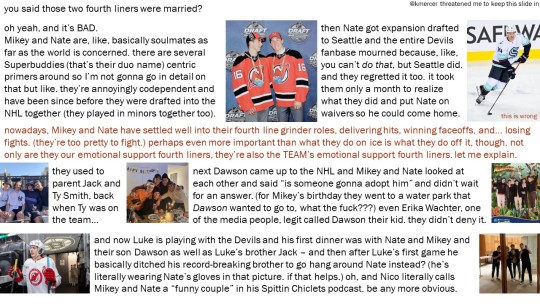
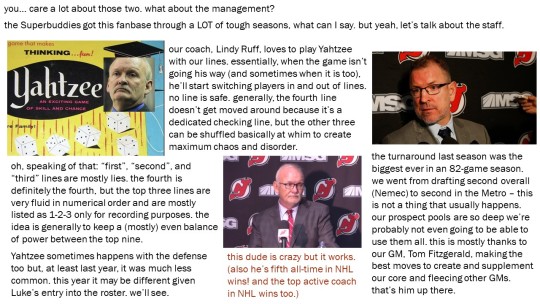

likes and reblogs highly appreciated here!!! spent a ton of time on this, hope it shows!
(and kudos to the discord crew who put up with me spamming them with pages of this and giving me the thumbs-up about it - love you all!!!)
let's go devils!!!
#new jersey devils#nj devils#devils primer#hockey primer#nhl#devils lb#devs lb#stereanalysis#stereducation
104 notes
·
View notes
Text

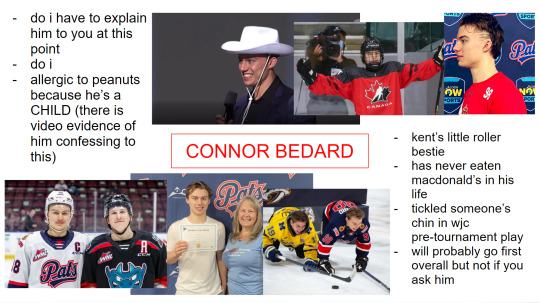
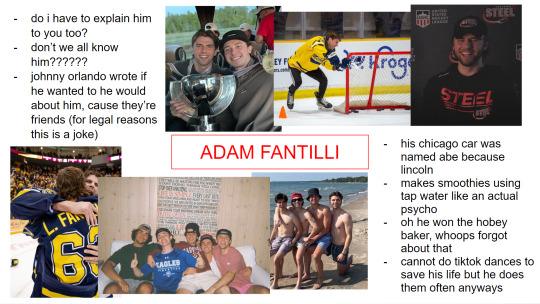
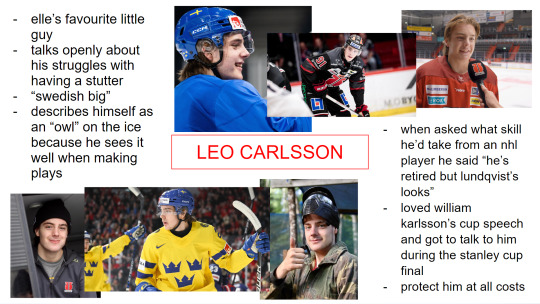
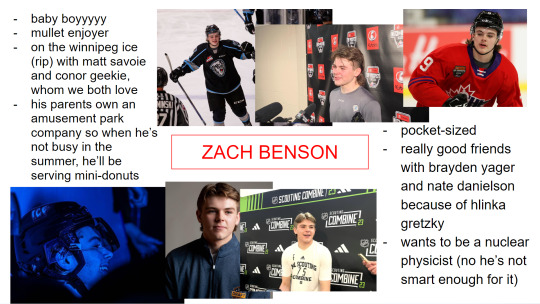


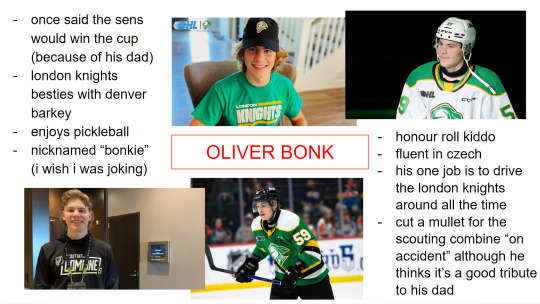

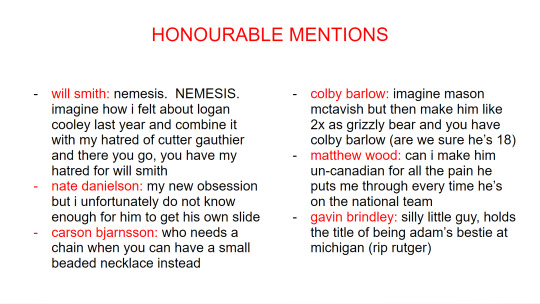
#here you all go !!!!!#annual draft primer#on time lmao for a second there i thought i might not make it in time#but i couldn't just NOT inform on the children#this might be the last year i do the draft primer#depending on whether or not i will still be as tapped into hockey#so enjoy it!!!!!#you have a draft baby and you have a draft baby and you have a draft baby-#nhl draft 2023#connor bedard#adam fantilli#leo carlsson#zach benson#andrew cristall#brayden yager#oliver bonk#denver barkey#will smith#nate danielson#carson bjarnsson#colby barlow#matthew wood#gavin brindley#this one is for you guys!#scheduled
284 notes
·
View notes
Text

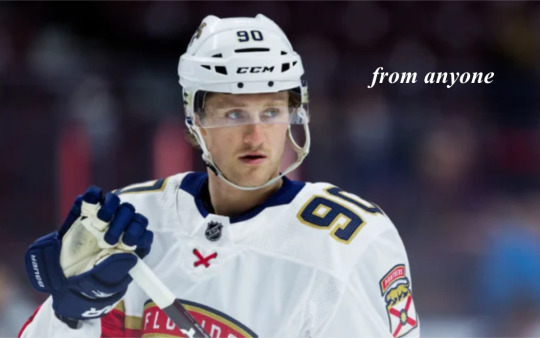
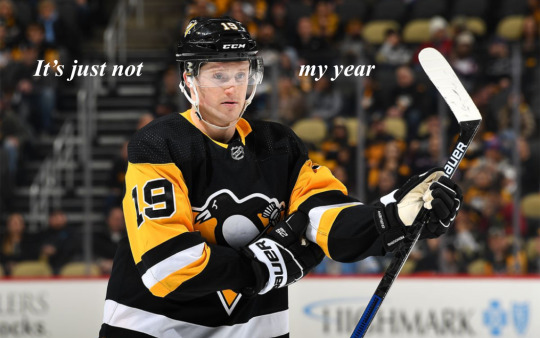

19 | Jared McCann x American Teenager - Ethel Cain
Part 5 of the Spotify Wrapped x Hockey series
#Spotify wrapped x hockey#why has this man worn so many numbers#I’m face blind as hell why would you do this to me#happy new year this is my gift to everyone but especially to Baz#it was a very very close call between McCann and Spezza for this#but seeing that McCann primer a few days ago has done Damage#jared mccann#pittsburgh penguins#vancouver canucks#florida panthers#Seattle kraken#have you ever seen a team so motivated by love by the way#other than the 22/23 leafs#mine#hockey#hockey edit#hockey art
133 notes
·
View notes